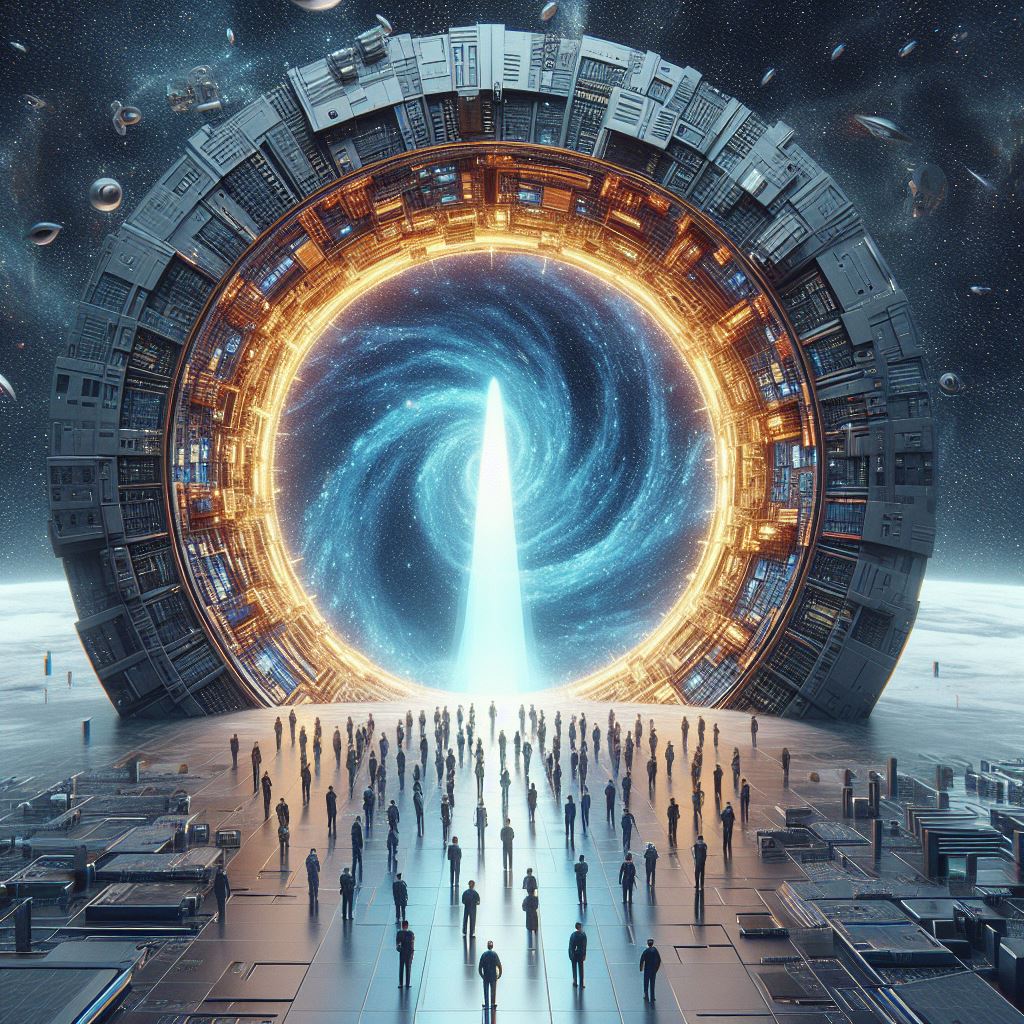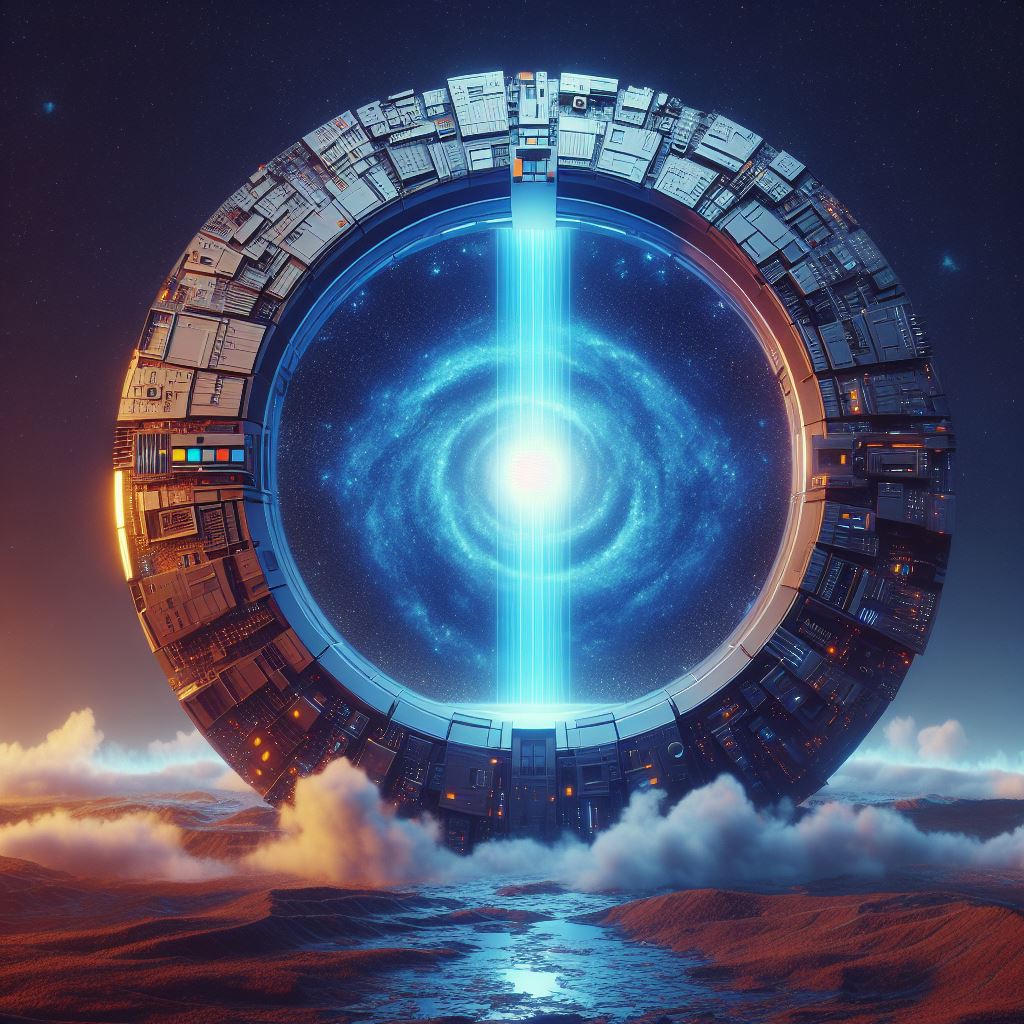What Is a Stargate? Unveiling Microsoft and OpenAI’s $100 Billion Supercomputer Project

What Is a Stargate the $100 Billion Supercomputer Project?
Introduction: What Is a Stargate?
In the ever-evolving landscape of artificial intelligence, a groundbreaking collaboration between Microsoft and OpenAI is poised to redefine the boundaries of computational power. Enter the enigmatic Stargate—a colossal supercomputer project with a staggering price tag of $100 billion. But what exactly is a Stargate, and why is it causing ripples in the tech world? Let’s explore.
What Is a Stargate? The Birth of Stargate

At its core, a Stargate is more than just a sci-fi trope. It’s a real-world endeavor that promises to revolutionize AI research, data processing, and scientific discovery. Here’s what we know so far:
- The U.S.-Based Data Center:
- Stargate’s home base will be a state-of-the-art data center located in the United States. Within its walls, a supercomputer of unprecedented scale will come to life.
- This data center will house millions of AI chips, each a powerhouse in its own right.
- The $100 Billion Ambition:
- Yes, you read that correctly. Stargate’s estimated cost is a jaw-dropping $100 billion.
- To put this into perspective, it’s roughly 100 times the cost of some of today’s largest data centers.
- Microsoft and OpenAI’s Grand Vision:
- The brains behind Stargate are the collaborative forces of Microsoft and OpenAI.
- Their joint mission? To propel AI capabilities into uncharted territory.
- Stargate represents the pinnacle of their partnership—a testament to their commitment to pushing the boundaries of innovation.
The Countdown Begins
While the Stargate project is still in its infancy, the timeline is ambitious:
- 2026: Microsoft gears up to launch its own supercomputer as part of the fourth phase of the project.
- 2028: Stargate itself is slated for liftoff. Imagine a behemoth of computational might, humming with AI potential.
- Beyond: Stargate is just the beginning. Microsoft and OpenAI have a roadmap that spans five installations over the next six years.
Microsoft’s AI Prowess
Microsoft’s track record speaks volumes. The tech giant has consistently pushed the envelope in AI infrastructure. Their ability to build and deploy cutting-edge AI models is unparalleled. With Stargate, they’re taking that legacy to cosmic proportions.
OpenAI’s Silence
Curiously, OpenAI has remained tight-lipped about Stargate. No official statements yet. Perhaps they’re channeling their energy into the project itself—a silent force driving the future of AI.
Stargate Vs Existing Supercomputers

Stargate, the audacious brainchild of Microsoft and OpenAI, stands on the precipice of computational supremacy. Let’s explore how it compares to existing supercomputers:
- Cost and Ambition:
- Stargate’s estimated cost of $100 billion dwarfs traditional data centers, which typically range from a few hundred million to a couple of billion dollars.
- Its price tag reflects the rise of artificial intelligence (AI) and the need for cutting-edge infrastructure.
- Scale and Power:
- Stargate is colossal. It will house millions of AI chips, making it a computational behemoth.
- Existing supercomputers pale in comparison, both in sheer size and processing muscle.
- Purpose-Built for AI:
- Unlike generic data centers, Stargate is purpose-built for AI workloads.
- It demands advanced hardware cooling systems, massive cloud storage, and an unprecedented number of chips—potentially in the millions.
- Microsoft’s Investment:
- Microsoft’s substantial investment in OpenAI fuels Stargate. Their ongoing partnership ensures a steady stream of resources.
- The supercomputer project aligns with their shared vision of pushing the AI frontier.
- Phases of Development:
- Stargate marks the culmination of a five-phase data center project.
- In the third phase, multiple supercomputers are already enhancing ChatGPT’s performance.
- By 2026, Microsoft aims to launch a smaller but more potent supercomputer, bridging the gap between existing systems and Stargate.
- AI’s Insatiable Appetite:
- AI data centers devour resources. They hunger for more power, more chips, and more storage.
- Stargate’s astronomical cost reflects this insatiable appetite for computational prowess.
Challenges in Managing such a Massive Project
Managing a colossal project like Stargate presents a constellation of challenges. Let’s explore the cosmic hurdles that Microsoft and OpenAI must navigate:
- **Logistical Complexity:
- Orchestrating a project of this magnitude involves intricate logistics. From procurement to installation, every step requires precision.
- Coordinating millions of AI chips, cooling systems, and power distribution demands meticulous planning.
- **Infrastructure Scaling:
- Stargate’s scale surpasses existing data centers. Ensuring seamless scalability is crucial.
- As computational demands evolve, the infrastructure must adapt without disrupting operations.
- **Energy Consumption:
- A supercomputer of this caliber consumes astronomical energy. Balancing computational might with sustainability is essential.
- Efficient power management and renewable energy sources are critical.
- **Heat Dissipation:
- Heat generated by millions of AI chips can rival a stellar furnace. Effective cooling mechanisms are vital.
- Innovative cooling solutions—liquid cooling, advanced airflow, and heat sinks—are imperative.
- **Cost Management:
- The $100 billion budget is a cosmic figure. Controlling costs while maintaining quality is a cosmic challenge.
- Unexpected expenses, supply chain disruptions, and inflation must be navigated.
- **Security and Privacy:
- Stargate’s data center houses sensitive information. Safeguarding against cyber threats, breaches, and espionage is paramount.
- Encryption, access controls, and robust security protocols are non-negotiable.
- **Human Resources:
- Managing a project of this magnitude requires a galaxy of skilled professionals.
- Recruiting, training, and retaining top talent—especially AI experts—is essential.
- **Regulatory Compliance:
- Navigating legal and regulatory landscapes across borders is akin to interstellar travel.
- Compliance with data protection laws, environmental regulations, and export controls is complex.
- **Interstellar Collaboration:
- Microsoft and OpenAI’s partnership transcends corporate boundaries. Aligning visions, communication, and decision-making is vital.
- Bridging organizational cultures and goals is akin to navigating cosmic distances.
- **Unforeseen Cosmic Rays:
- Cosmic rays—unexpected challenges—can disrupt even the best-laid plans.
- Flexibility, adaptability, and resilience are shields against cosmic surprises.
In the cosmic dance of Stargate, these challenges become stepping stones toward the stars—a testament to human ingenuity and AI’s boundless potential.
Conclusion: What Is a Stargate?
As the world anticipates the birth of Stargate, we stand on the precipice of a new era. A supercomputer fueled by AI chips, a partnership that defies limits, and a quest for knowledge—all converge at the threshold of possibility. Brace yourselves—the Stargate awaits.
Disclaimer: While Stargate may not involve wormholes or interstellar travel, its impact on AI research is no less extraordinary.
Source: Quartz
OpenAI Valuation: A $90 Billion Bet on the Future of AI




